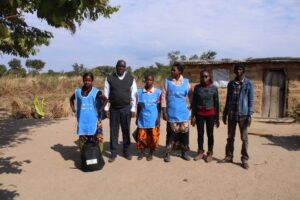By Mutinta Mubagwe
National Food and Nutrition Commission executive director Musonda Mofu says Zambia is headed for disaster if no proper interventions are put in place to ensure good nutrition among its citizenry. Mr.Mofu stated that over 45 percent of the population in Zambia is under malnourished due to micronutrients deficiency.
He disclosed that 32 percent of women in rural areas are diabetic and hypertensive while in urban it was at 35 percent diseases he said was associated with poor diet and lack of exercise and could be avoided. Mr.Mofu was speaking at Mumus lodge in Kaoma when he addressed health workers at an orientation for the Eat Well health campaign.
The director was saddened that the prevailing atmosphere in terms of people eating well was not good as most people were not willingly to eat locally produced foods which are far much healthier.
Mr.Mofu was optimistic that with the coming of the Eat Well campaign, government will achieve its goal to have a health population that will eat well by 2030. “We have discovered that most of these diseases that are affecting people are as a result of tobacco abuse, alcohol, unhealthy diets and lack of physical exercises. We are optimistic that with the Eat Well campaign things will change for the better,” Mr.Mofu said.
Mr.Mofu reaffirmed government’s commitment to safeguarding the health of it’s people adding that government cannot do it alone but with concerted efforts from all stakeholders. He explained that so far the campaign will be rolled out in four Districts of Western Province namely Kaoma, Kalabo, Shan’gombo and Mongu as a pilot program.
And NFNC senior nutritionist Belinda Tembo called on Zambians to eat locally produced foods if some diseases are to be prevented. Ms. Tembo noted that most indigenous foods were more nutritious and cheaper and hoped the Eat Well campaign would be a national program soon so that life style diseases could be prevented.
“Most people have the notion of thinking that eating well is expensive but to the contrary, eating well is not expensive if we pick on indigenous foods and in Zambia, we have a lot of wild fruits that are very nutritious that we can eat and maintain healthy bodies,” Ms. Tembo said. And Kaoma District Nutrition Support Coordinator -Brian Sikute disclosed that Kaoma District is at 34.1 percent stunting prevalence rate which stands to be the highest amongst the four SUNII districts in the province.
Mr. Sikute however said a lot of interventions have been put in place to correct the situation. He said among other interventions put in place are the formation of Nutrition Support Groups -NSGs which are the pillars of the SUNII program in all the 18 Wards of the District and that so far, the formation of NSGs is progressing well and he hopes 100 percent coverage by end of July, 2022.
Mr.Sikute said behavioral change lessons will also be among many other interventions put to reduce stunting among children under the age of two.





